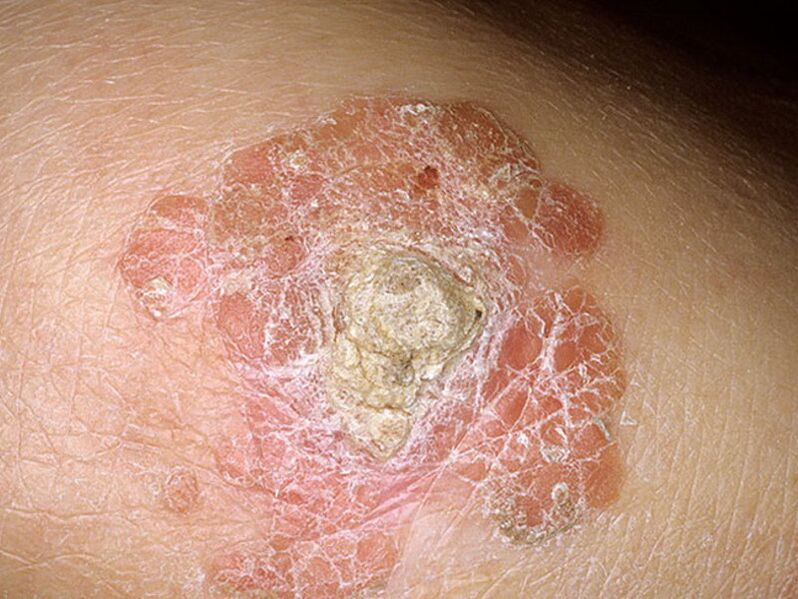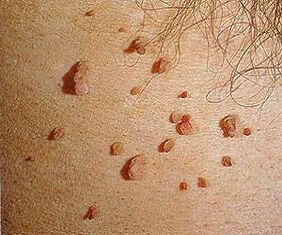
Papillomavirus is a group of viruses that has about 24 subgroups. To date, about 600 species have been found. It is transmitted from person to person. The problem of diagnosing and treating human papillomavirus (HPV) is facing many people and doctors. The virus can cause tumors, which can be found on the skin, in the esophagus, in the mucous membranes of the mouth, in the bronchi, in the conjunctiva, and even in the rectum.
Causes and ways of infection

Human papillomavirus is a very common disease:
- during sexual intercourse;
- touching, kissing;
- through lines or cuts when going to the pool, bath, public toilet or gym;
- shaving or epilation.
According to statistics, women are infected in 20% of cases, even with one partner.
About 70% of the population is sick and carriers of HPV. The virus is especially active in patients with warts (the virus that caused them) in the form of sharp or flat uneven growths on the skin and genitals. In medicine, they are called warts and papillomas.
A newborn baby can be infected by its mother during childbirth. In infants, the disease manifests itself in the form of growths in the throat or genitals.
Symptoms and development of the virus
The incubation period of the disease can last from two weeks to several years. In this case, there are no visible signs of the virus.
Warts on the skin can appear gradually and suddenly, but many warts, similar in shape to seaweed, can grow quickly.
If the infection is sexually transmitted, human papillomavirus can be seen in women:
- in the area of the labia;
- difficult;
- cervix;
For men:
- around the head of the penis;
- on the skin of the genitals.
When partners are taken away with oral sex, the mucous membranes of the mouth and throat are damaged, and for those who love anal sex - the rectum, anus.
Men rarely suffer from this disease, but they may be carriers of it. The virus is more common in women when they are tested for marriage.
Attention!If suspicious growths are found, consult a doctor immediately, as some types of the virus can cause tumors to regenerate and cause cancer.
Classification and types

To date, about 600 strains of the virus have been identified. They are generally harmless and disappear within two years after infection when there is normal immunity.
However, about 40 types are dangerous to humans, harmless and cause cancer.
In the 1980's, doctors discovered a link between HPV and cervical cancer.
The following types of viruses are classified according to the location and type of skin lesions:
- foot;
- "butcher's warts";
- easy going;
- flat.
To the genitals:
- genital warts;
- flat, provocative changes on the surface of the cervical membrane and causing oncology;
- Papillomas that cause cancer of both the genitals and anus in both women and men.
Other types:
- damage to the mucous membranes of the mouth;
- respiratory papilloma;
- Tumors of the neck, head, lungs.
Varieties:
- Simple papillomas appear on the back of the palm and can grow on the knees in children. They resemble rough growths in the form of cones.
- The sole - prevents walking, look at first as shiny growths, and then grows to a wart with a ridge at the bottom. Growing up, they form a whole group of similar structures.
- Flat - slightly different in color from the skin, but causes itching, redness and discomfort.
- Filiform. In medicine, they are called acrocords. They are more common in people over 50 years of age. Initially, they appear, growing up to 6 mm, like yellow bumps.
When warts appear where they are visible, the patient can go to a medical facility for diagnosis and treatment. Damage to the cervix or vagina is more difficult to diagnose, especially if women do not pay attention to the gynecologist.
Virus diagnosis
If warts appear on the skin or mucous membranes, it is necessary to consult a doctor. Warts do not cause as much cancer as flat papillomas, but it is best to remove them to reduce the chances of infecting those around you.
Such tumors are being studied because of the risk of cancer.
The doctor will examine the person for human papillomavirus - scraping the surface of the mucous membrane (colposcopy with cervical lesions - examination for strong enlargement of the mucous membrane) or skin. The sample is examined under a microscope for changes in the structure of the tissue (dysplasia), as well as to determine the type of virus.
According to the results of cytological examination, cervical smears are divided into 5 classes:
- no changes;
- changes are caused by inflammatory processes;
- There are small changes in the structure of the cells, histology is required;
- cells with signs of malignant changes were found;
- There are many cells with signs of cancer.
Histological examination provides a detailed description of changes in soil structure.
Clinics use special tests that allow you to get accurate results from HPV tests. A positive test result indicates the presence of harmful processes in the soil.
HPV is at high oncogenic risk. The high risk of cancer comes from human papillomavirus types 16 and 18, which occur in 70% of tests.
Based on the results of the examination, a diagnosis is made and treatment is prescribed.
HPV treatments

How to treat human papillomavirus? In connection with the decline of immunity due to the disease, doctors first prescribe drugs that increase it:
- interferons;
- interferonogens.
However, the mainstay of treatment is the mandatory removal of tumors with modern cosmetology:
- diathermoelectrocoagulation;
- cryodestruction ("cauterization" with liquid nitrogen);
- laser removal;
- radio or dry cleaning;
- introduction of immunostimulants or immunomodulators into growth.
In each case, the type of treatment should be determined by a specialist.
If the examination does not reveal pathological processes in the skin, only papillomas with a small area of skin are removed. If malignant cells are detected, the operation will occupy a significant area, depending on the depth of the affected area.
Folk methods and recipes
How to cure human papillomavirus? At all times, traditional medicine has helped fight disease. The experience of treating HPV is also enormous.
Remedies offered by traditional medicine. You can lubricate the wart:
- celandine juice;
- sour apple juice and their pose;
- dandelion juice;
- ammonia.
Proven recipes:
- Prepare a tincture of chaga, celandine, yarn, cool and rub pieces of ice 3-4 times a day.
- Lubricate with castor oil, then cover with a cloth. Usually 5-6 such procedures are enough.
- Kerosene and nuts. Grind unripe nuts in a meat grinder, then mix: for 1 part of nuts - 2 parts of kerosene, the mixture should be brewed for three weeks. Apply to warts 2 times a day.
Herbs are recommended to boost immunity
- potato juice,
- echinacea infusion,
- meat tea.
Herbal collections:
- dandelion root, nettle, melissa, bell, plantain;
- ermen, zvelo, tricolor violet, dill (seed), calamus (root), clover (flowers), plantain.
HPV treatment at home
Papillomas can be removed at home with over-the-counter medications:
- A special composition that hardens warts. It should be used carefully so as not to touch healthy skin. After about a week after the procedure, the growths disappear, leaving no trace.
- Treatment with adhesive strips. It only takes 3 hours. However, when it is interrupted, it can cause unpleasant or painful feelings.
- Dissolve 2, 5 grams of aspirin powder, the same amount of iodine, 2 grams of boric acid in 100 ml of alcohol and rub the papillomas with this composition.
Infection prevention
However, do not forget about the viral nature of the appearance of adverse growths. Removal of papillomas from the surface of the skin does not cure the disease. Therefore, it is necessary to consult a specialist to prevent the development of tumors. It is not yet possible to completely cure HPV, but you can take steps to prevent infection.

To prevent this, you need:
- Use a condom for casual sex. A condom does not completely protect against HPV infection because it does not cover the entire surface of the skin when touched, but it still helps to partially prevent the spread of infection.
- Even the smallest skin lesions should be avoided in baths, swimming pools and toilets.
- Children are vaccinated against cervical cancer caused by the HPV virus. Girls aged 11-12 are vaccinated. Vaccination results showed a reduction in the incidence of the disease in women receiving the drug.
Have you noticed warts or suspicious growth on your body? Contact a qualified professional and follow all recommendations. HPV can sometimes be very dangerous. Learn how to treat and remove and take action!














































































